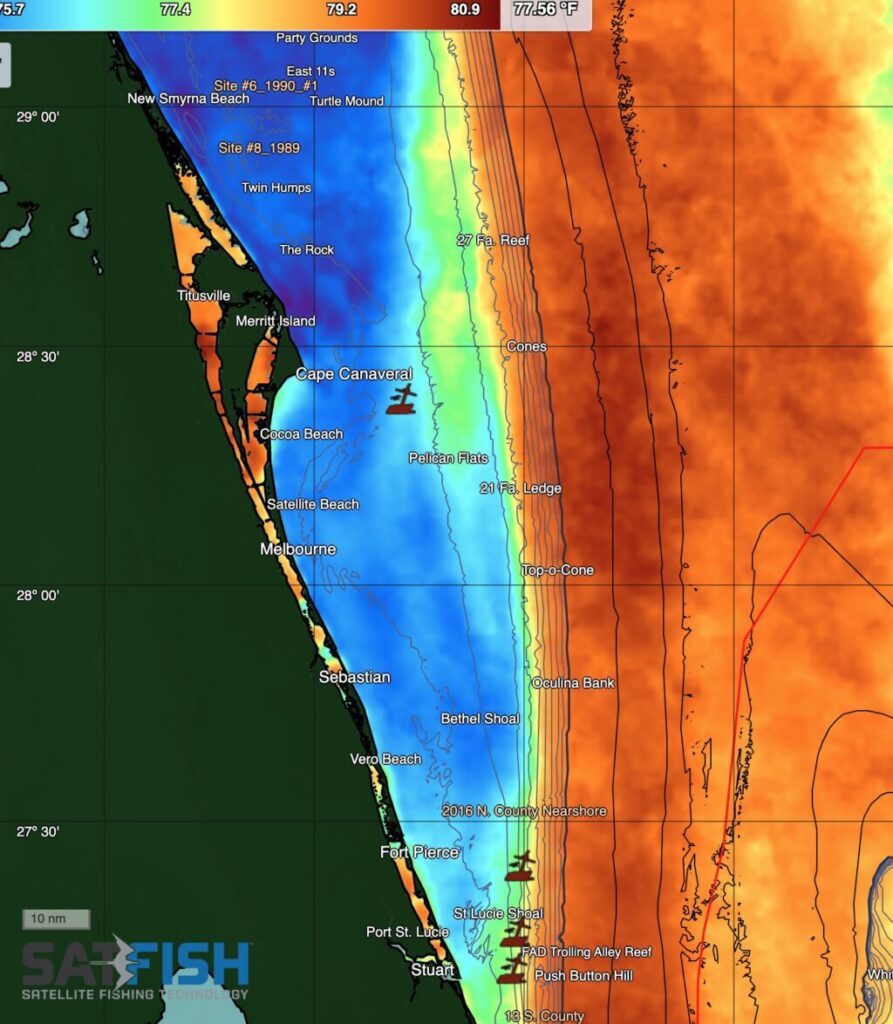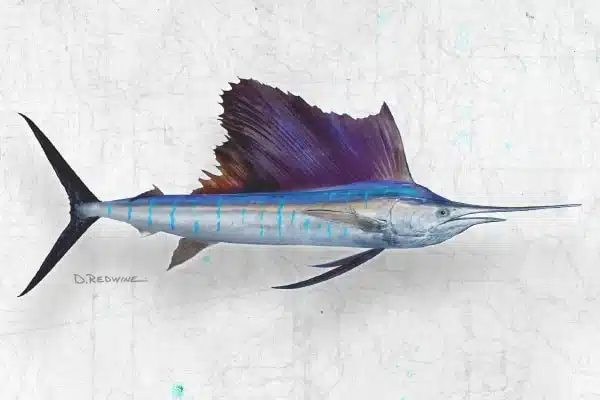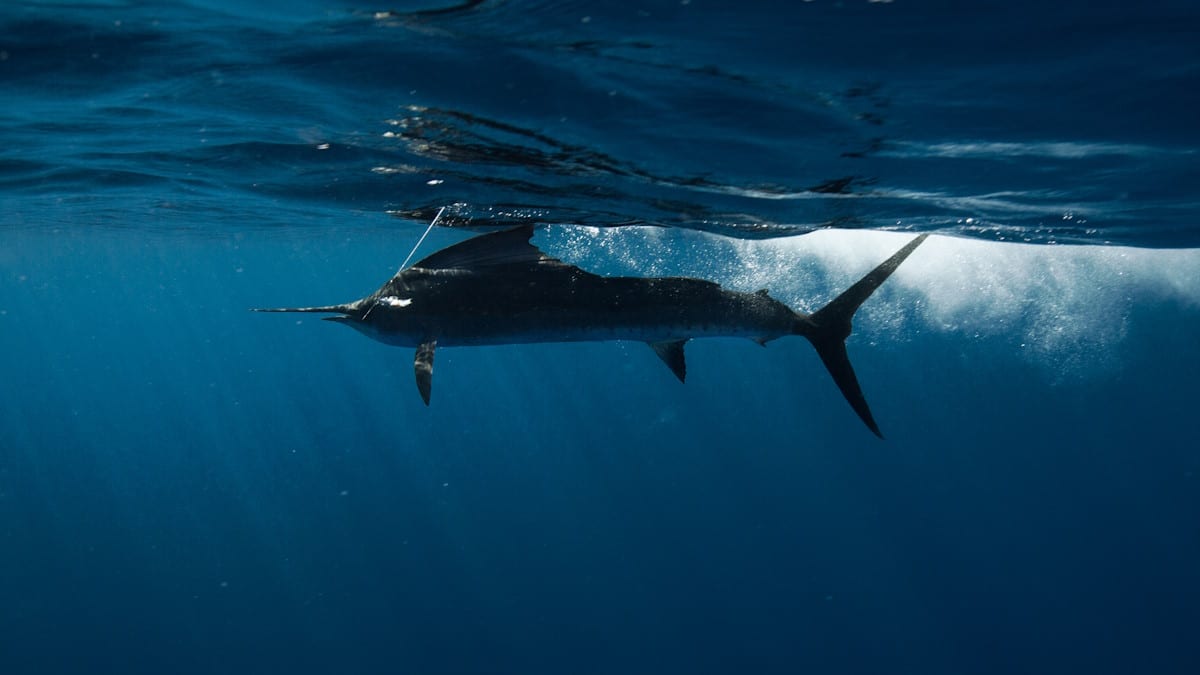Istiophorus albicans
Family:
Istiophoridae
Other Common Names:
Billfish, Sailie, Spindlebeak, Ocean Gar
Description
The Atlantic sailfish is a highly prized game fish known for its incredible speed, agility, and distinctive sail-like dorsal fin. Found in warm waters of the Atlantic Ocean, this species is characterized by a streamlined body and an elongated bill, which it uses to slash through schools of prey. Sailfish are among the fastest fish in the ocean, capable of reaching speeds up to 68 miles per hour. They are opportunistic predators, primarily feeding on small pelagic fish such as sardines, mackerel, and anchovies, as well as cephalopods like squid. Sailfish are known for their migratory behavior, often traveling long distances in search of food and favorable breeding conditions. Their remarkable speed, powerful jumps, and acrobatic displays make them a favorite among sport fishermen.
Ideal Conditions for Sailfish
SatFish maps show you where to find ideal conditions for Sailfish:

- Sea Surface Temperature:
72-83°F / 22-28°C
(77-82°F / 25-28°C is ideal) - Water Color / Chlorophyll:
Clean green to purple, 0.00 – 0.01 mg/m3 - Bathymetry:
Continental shelf edges, drop-offs, and offshore humps, especially where warm currents push against structure and create favorable feeding zones.
Atlantic sailfish are fast, agile predators known for their acrobatic strikes and high-speed runs. They thrive in warm, blue water and are most often found near temperature breaks, current edges, and offshore structure where baitfish like ballyhoo, sardines, and squid are concentrated. Sailfish migrate seasonally along the U.S. East Coast, Gulf of Mexico, and into the Caribbean, following warm currents like the Gulf Stream. From late spring through early fall, they move north with rising water temperatures. In the cooler months, they shift south to warmer tropical waters. They often feed near rips, weed lines, and bait-rich current edges, especially where clean water and strong current meet. While they can travel alone or in small groups, they’re commonly found in higher numbers when conditions line up — warm temps, clear water, and lots of bait. Use sea surface temperature charts, current data, and chlorophyll layers on SatFish to pinpoint the zones sailfish prefer. When you find those temperature breaks loaded with bait, sailfish usually aren’t far behind.
Sailfish Migration Patterns
In late spring through early fall, they migrate north along the U.S. East Coast and into the Gulf of Mexico, riding the warm waters of the Gulf Stream. During this time, they’re often found off Florida, the Carolinas, and the northern Gulf, where they feed on schools of sardines, ballyhoo, and squid. As temperatures begin to drop in fall and winter, sailfish move south into the warmer waters of the Caribbean, southern Florida, and the southern Gulf of Mexico, where they remain active throughout the cooler months. This predictable north-south movement gives anglers a reliable seasonal window in each region. Use SatFish SST and current charts to track the warm edges and frontal boundaries sailfish follow during their migration
SatFish Regions Where Sailfish Can Be Found
- Gulf of Mexico (all regions)
- Florida (all regions)
- North Carolina
- South Carolina/ Georgia
- NE Canyons South (occasionally)
- Bahamas

How to Catch Sailfish
Atlantic sailfish are fast, acrobatic predators often found in warm, clear water where baitfish are concentrated along temperature breaks, current edges, weed lines, and offshore structure. While they often travel solo or in pairs, in the right conditions—warm blue water, strong currents, and plenty of bait—you can find groups of sailfish feeding in the same area.
Proven Sailfish Techniques:
Trolling with Ballyhoo:
The most common and effective method. Troll rigged ballyhoo, often with dredges or teasers to raise fish. Target current edges, rips, and color changes where bait piles up. Circle hooks with light fluorocarbon leaders help improve hookups on finicky fish.
Live Baiting:
When sailfish are in the area but not actively feeding, slow-trolling or drifting live bait like sardines or goggle-eyes can be deadly. This is especially effective in South Florida and the Gulf, where kite fishing is also popular.
Kite Fishing:
One of the most exciting ways to fish for sailfish. Flying a kite keeps live baits right on the surface, where strikes are explosive. This method shines when fish are feeding up high in clear, calm conditions.
Sight Casting:
When sailfish are seen tailing or cruising near the surface, be ready to pitch a live bait or small baitfish-patterned lure directly in front of them for a quick reaction strike.
Watch for Signs:
Keep a lookout for frigatebirds, bait balls, jumping sailfish, or slicks on the surface. Sailfish often feed near weed lines, current rips, and along the edges of warm-water eddies. Use SatFish SST charts and current overlays to help pinpoint these productive zones.
Resources & Further Reading
North Carolina DEQ – Atlantic Sailfish



